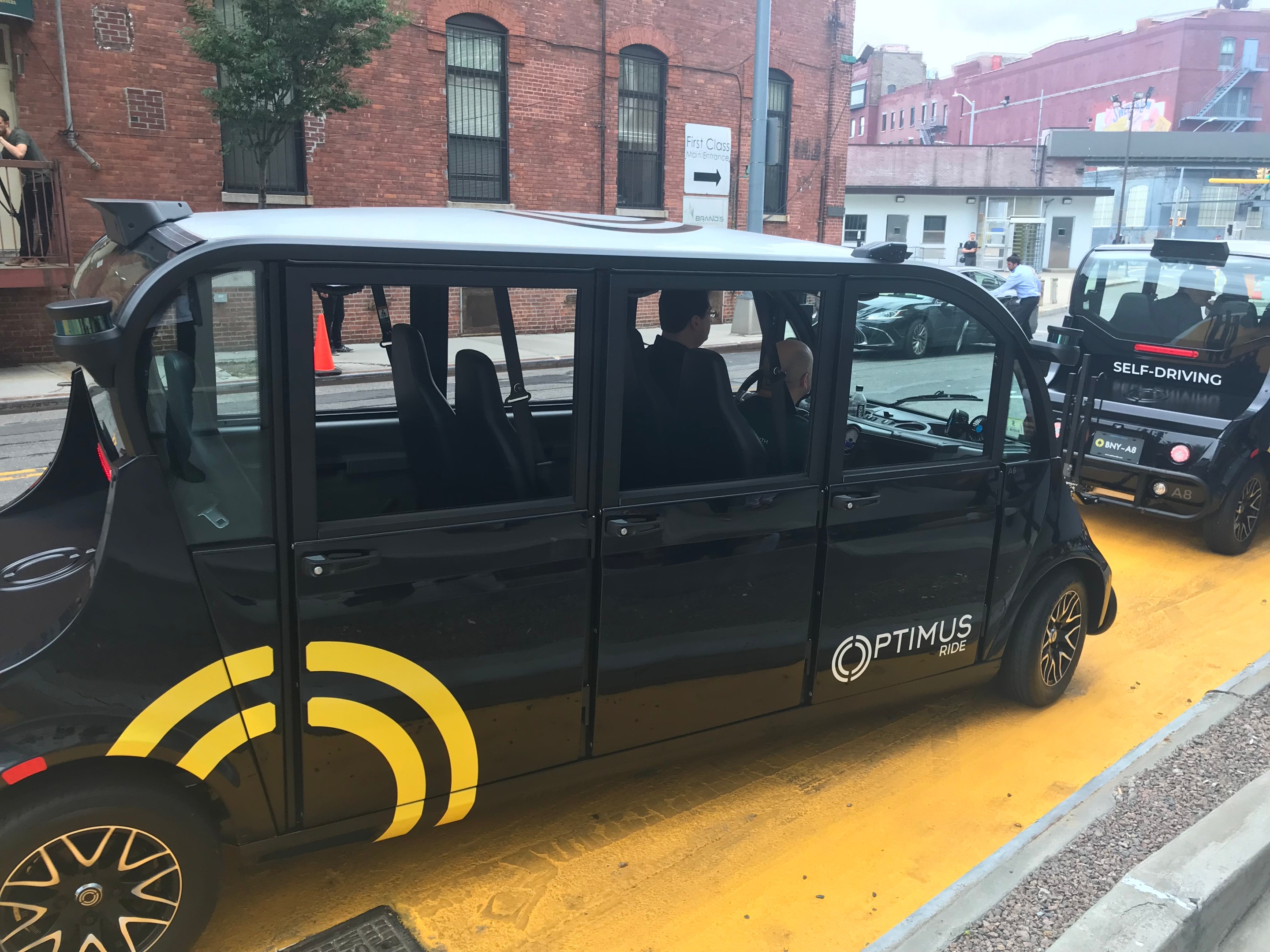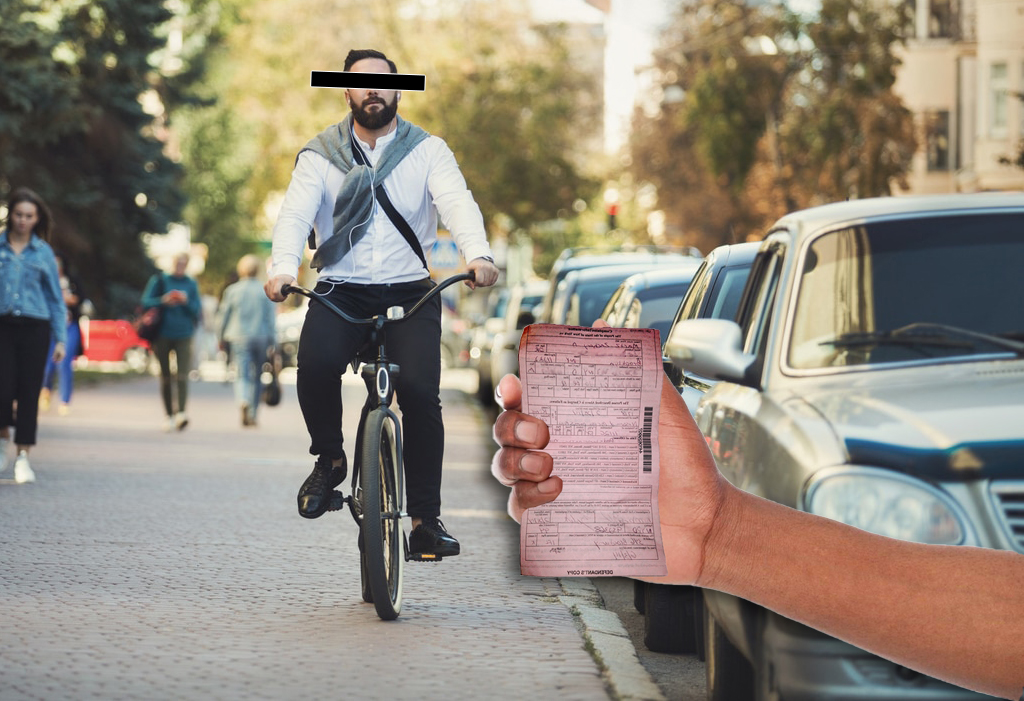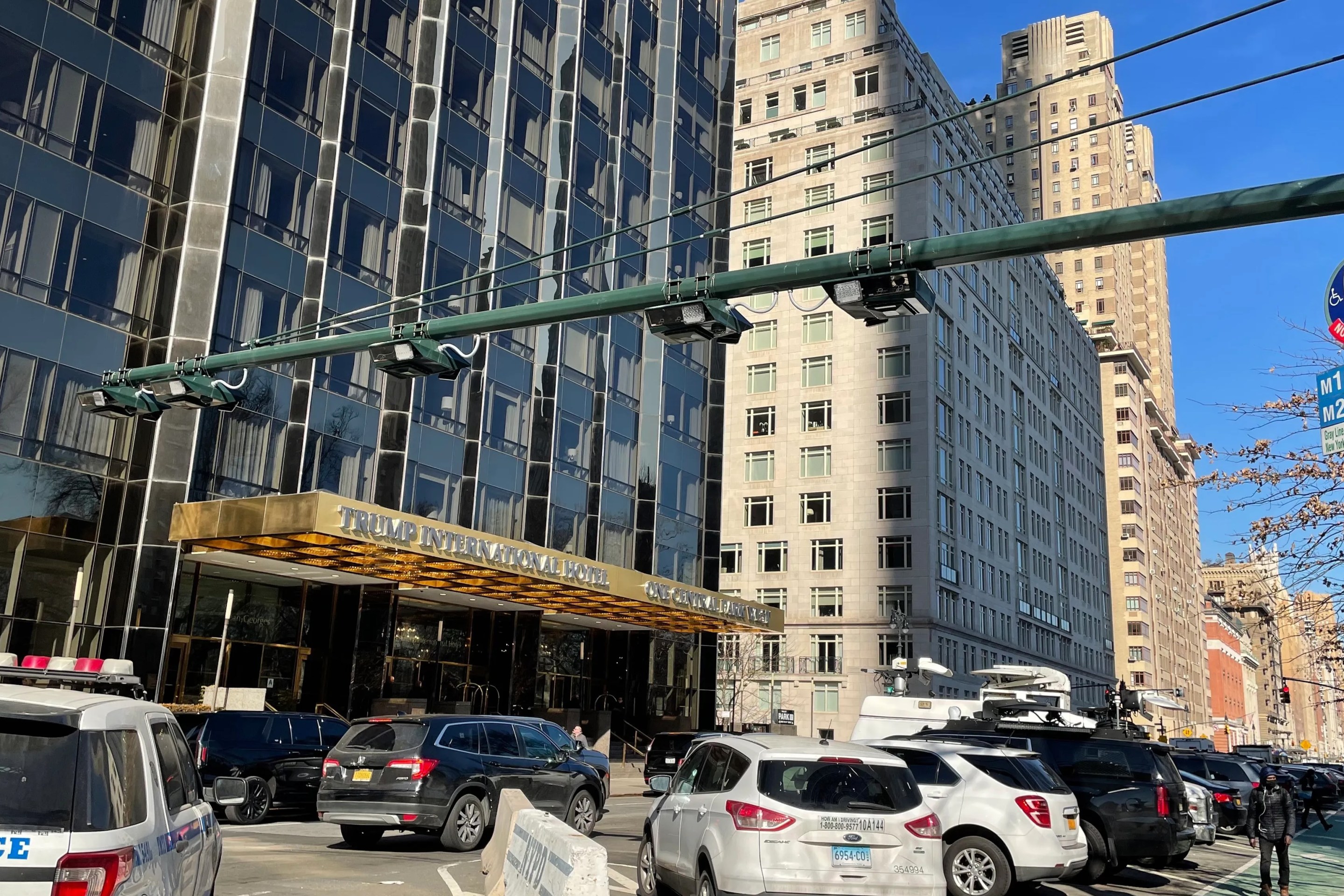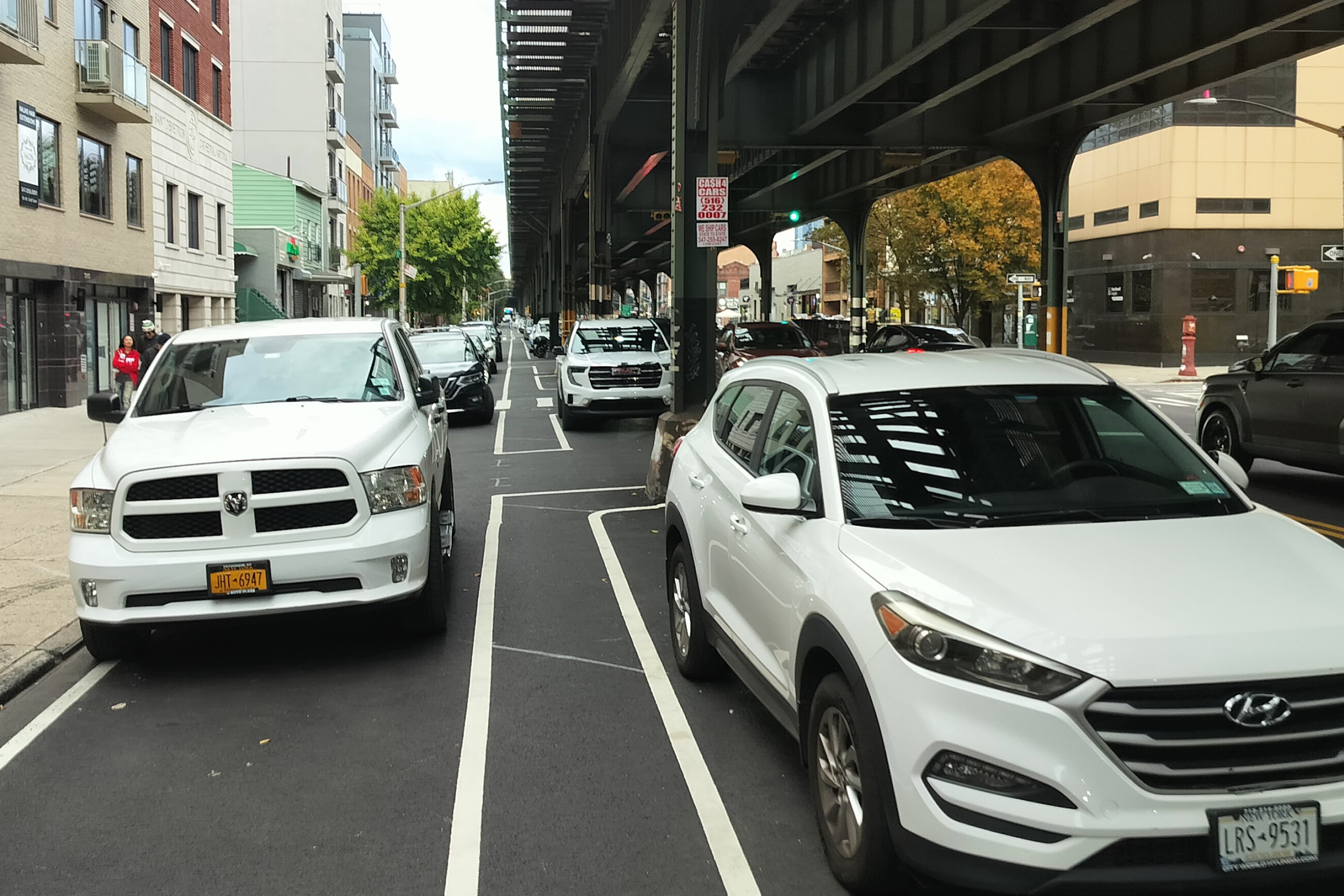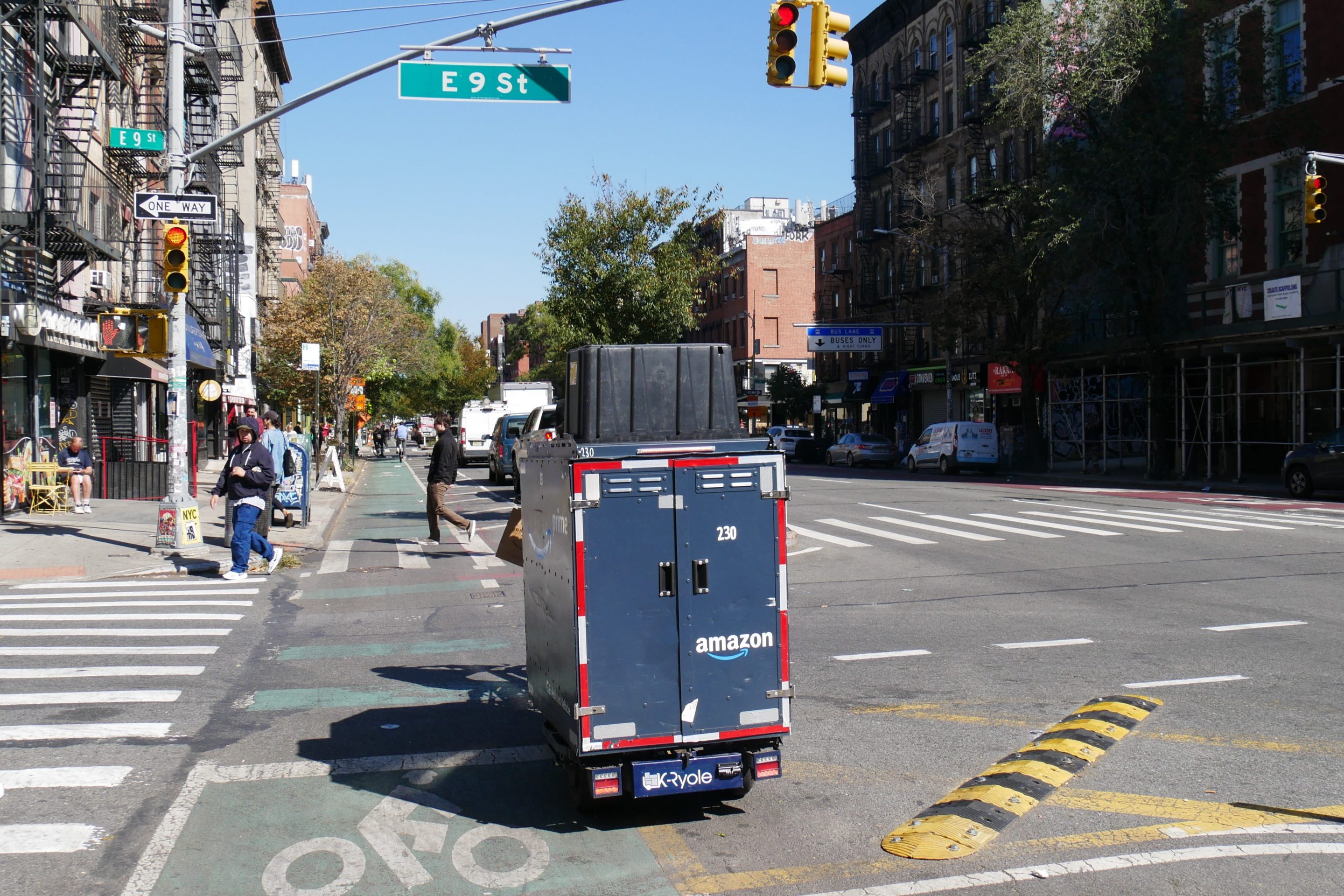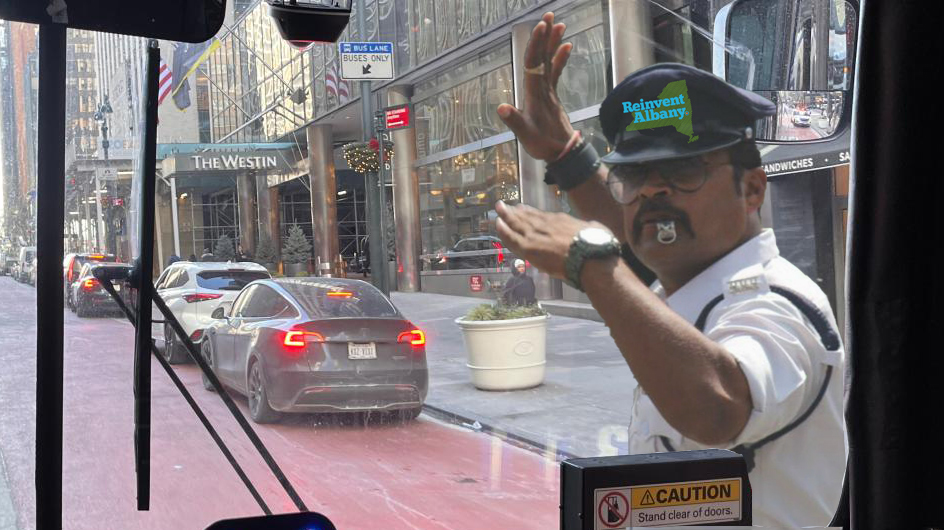Cars don’t hit and kill people — drivers do, so removing the people behind the wheel will be safer for everyone, says the CEO and co-founder of the latest company to roll out driverless cars.
Ryan Chin — whose Boston-based autonomous vehicle company Optimus Ride begins offering short look-ma-no-hands trips inside the Brooklyn Navy Yard on Wednesday — might have a point. Federal stats show that up to 94 percent of crashes are caused by human error, whether it's drunk or distracted driving or plain old-fashioned (and highly preventable recklessness). Another subset of crashes result from drivers who suddenly have a medical episode.
But an autonomous vehicle doesn't drive drunk or recklessly — or grab their chests and scream, "It's the big one!"
"Distracted driving, driving under the influence, and falling asleep while driving are some of the causes of accidents that are attributable to humans operating vehicles. These types of accidents can be eliminated by the self-driving technology that Optimus Ride deploys," said Chin.
Six of the company's autonomous vehicles will start shuttling passengers from the yard’s front gate on Flushing Avenue to the ferry dock along a 1.1-mile loop — the vehicles basically have a mind of their own and decide when it’s safe to go, stop, and turn safely in order to avoid hurting anyone on the road, especially pedestrians and cyclists. The press was given a preview on Tuesday.
“We use sensors to detect moving objects: people, pedestrians, bicyclists, squirrels and so forth," he said. "We look at patterns of movement so we have a very nuanced idea of every intersection, every road, and how people behave in an environment."
For now, the six-seat autonomous vehicle still has two Optimus Ride staffers in the front seat monitoring the trip, but the goal is for total autonomy, as Optimus Ride vehicles currently enjoy in Boston's Seaport District and Raymond Flynn Industrial Park — both similarly controlled environments like the Navy Yard.
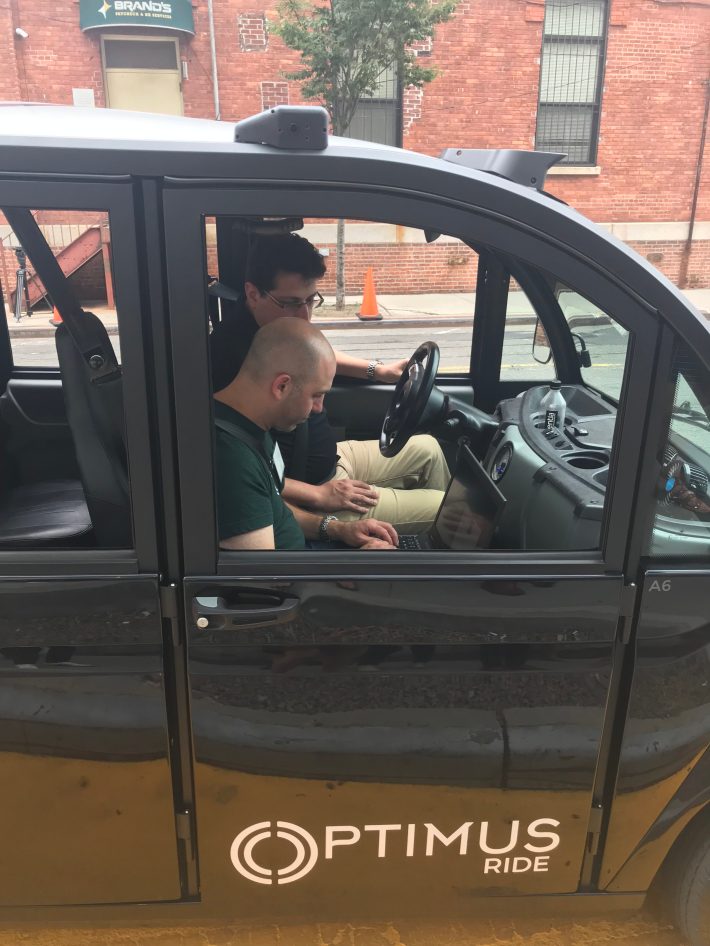
Chin said the privately run Navy Yard is the perfect place for the vehicles' inaugural debut in New York City since the risk of colliding with pedestrians and cyclists moving every which way is much lower than it would be on the city's public and chaotic streets.
"Launching our self-driving vehicle system in New York at the Brooklyn Navy Yard is yet another validation that not only is Optimus Ride's system a safe, efficient means of transportation, but also that autonomous vehicles can solve real-world problems in structured environments," he said.
Autonomous vehicles are legal thanks to a state law passed in 2017, but they're still at least a decade away, said Chin.
“I think that should be a goal for the whole industry,” he said.
Or, perhaps not. Autonomous vehicles do hold out the possibility of fewer privately owned vehicles, less political pressure to provide curbside space for their storage, and, of course, safety. But they are clearly not ready for prime time. Last March, a self-driving car, operated by Uber, struck and killed an Arizona woman as she was walking her bike across a road. Uber then pulled its autonomous vehicles from service.
And carmakers have not addressed basic issues of culture and custom. For instance, if pedestrians know that a driverless car won't hit them, they may jaywalk much more than they currently do. As a result, autonomous vehicles would create traffic jams because they were constantly stopping. Big Auto is already whispering about a solution: more restraints, or even pens, for pedestrians, the Times recently reported.
For now at least, if someone darts out in front of the vehicle, it’s a good thing a safety operator inside the car can take control of the wheel, or can maneuver past someone blocking the lane, according to Greg Zborowski, a safety and system manager for optimum who took Streetsblog for a spin in one of the vehicles.
"I may have to manually move us past if someone is the lane, however generally speaking we won't have to intervene even in these cases,” said Zborowski. “If you have something where someone really darts out in front of the car — at the moment we have safe drivers. With pedestrians, we're very, very conservative about how we handle pedestrians, people standing, and walking."
Or, if someone is on their phone, the smart-car may not be able to analyze and assess their next move, said Chin.
“It’s very hard to predict if you might be on your cellphone if you walk through an intersection. Are you gonna cross or look at your phone? It’s harder to predict,” he said.
Streetsblog previewed the service and found it boring — which is exactly what Optimus Ride wants: a totally uneventful and safe ride, according to Chin, who said the company's vehicles have not been involved in any crashes to date since it launched in 2015.
“Safety is our first priority," he said. "We haven’t had any incidents at all since we started the company.”
For now, the autonomous vehicles — which use advanced technology like mapping, data, and artificial intelligence to run on their own — won't go any faster than 15 miles per hour inside the Navy Yard. But they max out at 25 miles per hour — a speed limit Mayor de Blasio set back in 2014 as part of his signature Vision Zero campaign to reduce and ultimately end fatalities on city streets.
“That follows the whole guidelines of Vision Zero basically. If you go below a certain speed, fatalities approach zero, whether it’s autonomous vehicles or even human-powered," he said.
The autonomous vehicles will run on the roughly one-mile loop from the Yard's main entrance at Cumberland Street and Flushing Avenue to the ferry at Dock 72 between 7 a.m. and 10:30 p.m. on weekdays, and from Building 77, between Vanderbilt and Clermont avenues, on weekends. The rides are free. Chin expects 20,000 rides in the first month, with more to come.
Slowly.
"I believe there's different approaches towards different markets for autonomous vehicles, like trucks, some folks working on pizza delivery, and turning taxis into robots — I think the robot taxi market will take more than 10 years."
